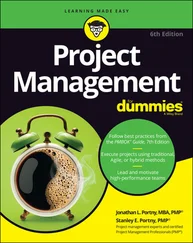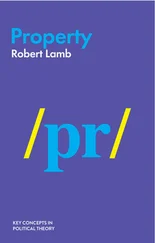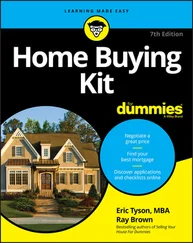The type of rental contract: Another important decision that has lasting consequences is deciding whether a lease or month-to-month rental agreement is best for your property. Although the residential rental housing industry is trending away from leases because they tend to favor only the tenants, you should reach your conclusion after conducting a market survey and understanding the pros and cons of each type of contract.
Check out Chapter 6for more info on determining how much to charge, setting deposits, and figuring out what type of rental contract to use.
Capturing prospects’ interest
A successful property manager needs to understand the role of marketing in creating demand and meeting the needs of local renters. Fortunately, your marketing and advertising possibilities have increased dramatically with the advent of the Internet and social media. You (or in my case, my grandchildren) can develop a fantastic website with digital photos, floor plans, and 3D tours. Just make sure that you follow all the fair-housing laws as you work to generate rental traffic.
In Chapter 8, I review various electronic and nonelectronic options for promoting your rental property and attracting prospective tenants.
Turning interest into property visits
The ways to attract potential tenants are endless, but the fundamentals of getting them to visit your property center on your ability to answer their questions — typically online at first, and later on the phone or in person. You also need to be sure that you understand fair-housing laws when you prescreen an interested party, as discussed in detail in Chapter 11. You need to understand how to qualify your prospects properly and legally, for both what you want in a stable, long-term resident and what they need to call your rental property their home for years.
Converting your texts, emails, or phone calls to actual property visits is the next essential step to creating maximum interest in your rental unit. Chapter 9explains how to get prospective tenants to view your property.
 The way in which you show your property to prospects is important. Avoid walking from room to room, stating the obvious. Instead, point out certain benefits of your unit’s unique or special features. Just don’t oversell the product and talk fast, like a YouTube or online infomercial. Ultimately, the best technique for showing your property is letting the property itself make the right impression, as I explain in Chapter 10.
The way in which you show your property to prospects is important. Avoid walking from room to room, stating the obvious. Instead, point out certain benefits of your unit’s unique or special features. Just don’t oversell the product and talk fast, like a YouTube or online infomercial. Ultimately, the best technique for showing your property is letting the property itself make the right impression, as I explain in Chapter 10.
The best result you can expect to achieve at the property-viewing stage is persuading the prospect to complete your rental application and put down a holding deposit. What the prospect can expect from you at this time is the receipt of all of the very important mandatory disclosures.
Picking your tenants and signing the deal
Property management isn’t exactly like an online dating game, but you do want to gather information (while following all fair-housing laws to the letter, as covered in Chapter 11) and select a tenant who meets or exceeds your minimum written rental qualification standards. Tenant selection is probably the single step in the rental process that can make or break you as a property manager, so I devote a lot of detail to this important topic in Chapter 11.
 With tenant selection, what seems to be a fairly straightforward process can actually be tricky because of the various limitations on the questions you can ask and the information you can request from interested applicants. Follow the same procedure for everyone to comply with fair-housing laws, and determine how you’re going to verify each prospect’s rental application. Be sure to select tenants based on objective criteria and then communicate your decision properly to both approved tenants and unsuccessful applicants.
With tenant selection, what seems to be a fairly straightforward process can actually be tricky because of the various limitations on the questions you can ask and the information you can request from interested applicants. Follow the same procedure for everyone to comply with fair-housing laws, and determine how you’re going to verify each prospect’s rental application. Be sure to select tenants based on objective criteria and then communicate your decision properly to both approved tenants and unsuccessful applicants.
Getting Your Hands Dirty: Managing the Property
You never hear from your tenants, yet the check seems to come in the mail each month. Managing your rental unit seems easy — just like you pushed a button! But after a year of progressively bursting with pride at your exceptional property management skills, you decide to drive by the property, only to find that your retirement plans and financial nest egg are candidates for a remake of Animal House!
In the next sections, I present the practical, in-the-trenches part of property management that can help you get familiar with every day-to-day eventuality related to the operational side of property management and the life cycle of a tenancy.
Moving tenants in and out
Coordinating the move-in of a new tenant is one of your most pleasant tasks, because this time is your best opportunity to ensure that your tenant starts out on the right foot by explaining your rental rules and guidelines. Chapter 12helps ensure that your move-in process runs smoothly.
But all good things must come to an end. That end should start with your making sure that the move-out date is mutually agreed-on in writing and that the tenant understands your expectations, policies, and procedures through a tenant move-out information letter. I share more information about making the move-out process as painless as possible for everyone involved in Chapter 16.
You can greatly improve your chances of making the rent collection process a positive experience by emphasizing your collection policy when your tenant first moves in and by answering for your new tenant all the who, what, when, where, and how questions they may have about their rent payments you collect.
But no matter how carefully you screen your tenants and how thoroughly you explain your rent collection policy, sometimes the inevitable happens, and your tenant is unable to pay the full rent when it’s due. What do you do? Start by issuing reasonable but firm policies when the tenant moves in and enforcing your grace period and late-period policies. Then, if your tenant doesn’t pay the rent or doesn’t live up to their responsibilities under the rental contract, you’re prepared to take the appropriate legal action to regain possession of your property as quickly as possible. Chapter 13provides more in-depth info to help you collect rent.
Turnover is your number-one nemesis as a rental property owner. Although it’s inevitable, your ability to renew your leases and provide incentives for your tenants to stay and pay can be significant in controlling your expenses and maximizing your rental income. That’s why keeping your tenants — particularly your good tenants — is a smart move.
 One of the best ways to ensure that your good tenants stay with you is to develop a tenant-retention program that offers them incentives. This action shows that you appreciate them. Chapter 14offers details on the importance of developing a good landlord–tenant relationship from the perspective of your tenants. It also reveals your tenants’ most important needs: good communication, timely maintenance, respect for their privacy, consistent policies, and good value for their rental dollar.
One of the best ways to ensure that your good tenants stay with you is to develop a tenant-retention program that offers them incentives. This action shows that you appreciate them. Chapter 14offers details on the importance of developing a good landlord–tenant relationship from the perspective of your tenants. It also reveals your tenants’ most important needs: good communication, timely maintenance, respect for their privacy, consistent policies, and good value for their rental dollar.
Dealing with troublesome tenants
Despite your best tenant-screening efforts, you’re going to make the wrong decision at some point and allow a problem tenant to move in, or you’ll have a good tenant who turns sour. But you can lessen the number of these incidents by getting to know some of the problems you may encounter and how to deal with them early on:
Читать дальше

 The way in which you show your property to prospects is important. Avoid walking from room to room, stating the obvious. Instead, point out certain benefits of your unit’s unique or special features. Just don’t oversell the product and talk fast, like a YouTube or online infomercial. Ultimately, the best technique for showing your property is letting the property itself make the right impression, as I explain in Chapter 10.
The way in which you show your property to prospects is important. Avoid walking from room to room, stating the obvious. Instead, point out certain benefits of your unit’s unique or special features. Just don’t oversell the product and talk fast, like a YouTube or online infomercial. Ultimately, the best technique for showing your property is letting the property itself make the right impression, as I explain in Chapter 10. One of the best ways to ensure that your good tenants stay with you is to develop a tenant-retention program that offers them incentives. This action shows that you appreciate them. Chapter 14offers details on the importance of developing a good landlord–tenant relationship from the perspective of your tenants. It also reveals your tenants’ most important needs: good communication, timely maintenance, respect for their privacy, consistent policies, and good value for their rental dollar.
One of the best ways to ensure that your good tenants stay with you is to develop a tenant-retention program that offers them incentives. This action shows that you appreciate them. Chapter 14offers details on the importance of developing a good landlord–tenant relationship from the perspective of your tenants. It also reveals your tenants’ most important needs: good communication, timely maintenance, respect for their privacy, consistent policies, and good value for their rental dollar.










